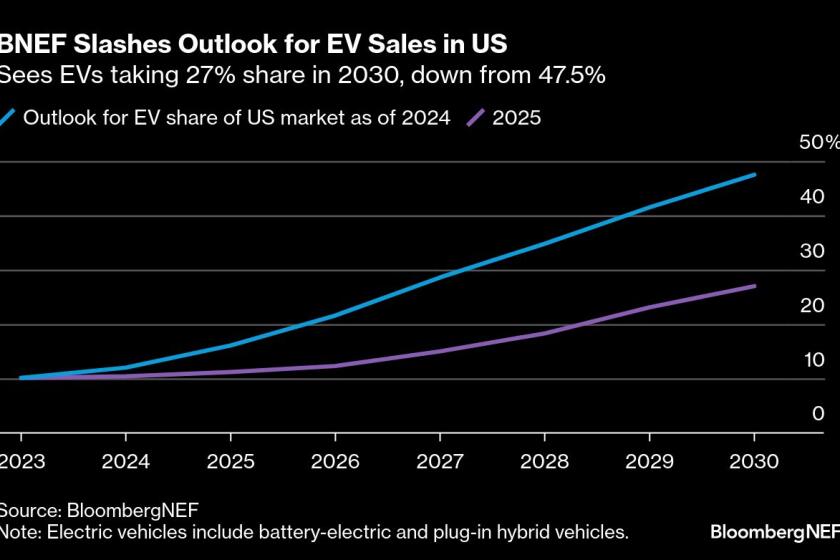Younger trade-ins are hopeful sign for car sales
- Share via
The average age of the vehicles people are trading in when purchasing new cars is going down — a good sign for the auto industry.
Auto information company Edmunds.com says that the average age of trade-in vehicles has fallen steadily to just over 5 years in November, from nearly 5.8 years in January.
That may be an early signal that consumers are loosening their purse strings and are starting to purchase cars just because they want a new vehicle. Much of the retail segment of the auto market for the last two years has been people whose vehicles were worn out and needed to be replaced.
While there’s a seasonal component to the number — luxury car sales are higher as the year closes and those vehicles typically have a shorter trade-in cycle than other autos — it’s generally a positive sign, said Jessica Caldwell, an analyst at Edmunds.com.
“If this stands, it shows that people are feeling more comfortable buying new cars and this would be good for the market,” said Caldwell, adding that she wanted to see the data from January and February before she would be willing to say that the lower age of trade-in vehicles indicated a rally in sales.
To be sure, there’s no great stampede of buyers to showrooms, but people eventually have to replace their cars at some point, and over the last three years many owners held off to wait for better times. They are not quite as cautious now.
“What we are seeing is an increasing willingness of people to replace their vehicles,” said George Pipas, sales analyst at Ford Motor Co.
Through the first 11 months of this year, automakers have sold 10.4 million vehicles in the U.S., an 11% gain from a year ago. The industry is on track to sell about 11.3 million autos this year.
Although that’s better than a year ago, it would still rank as the second-worst year since 1982.
In a normal market the average age of a trade-in is less than 5 years. It was 4.8 years as recently as 2006, Caldwell said.
The decline in recent months “is consistent with what we’re seeing in our showrooms,” said John Krafcik, chief executive of Hyundai Motor America, the U.S. division of the South Korean automaker. But “industry retail volumes are still very low by historical standards, and we’ve got a ways to go before the industry can declare victory.”




